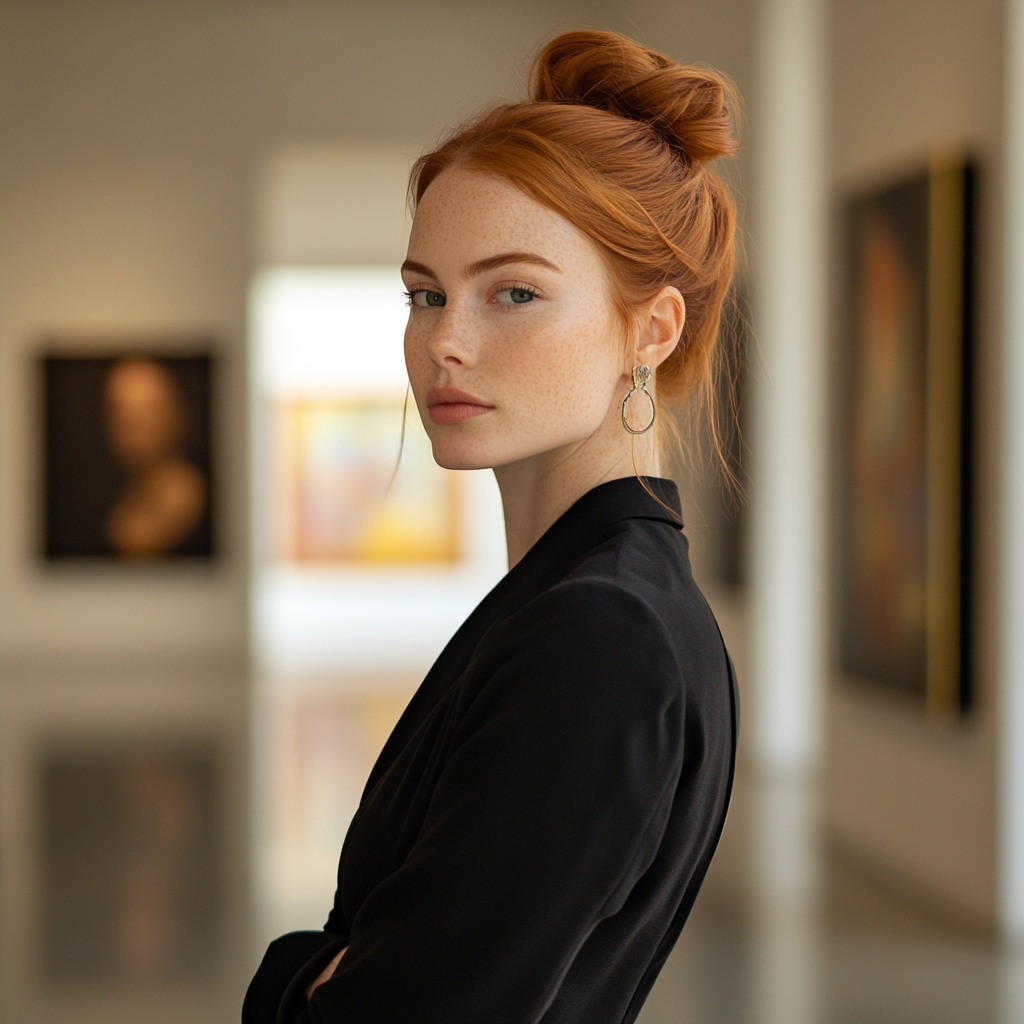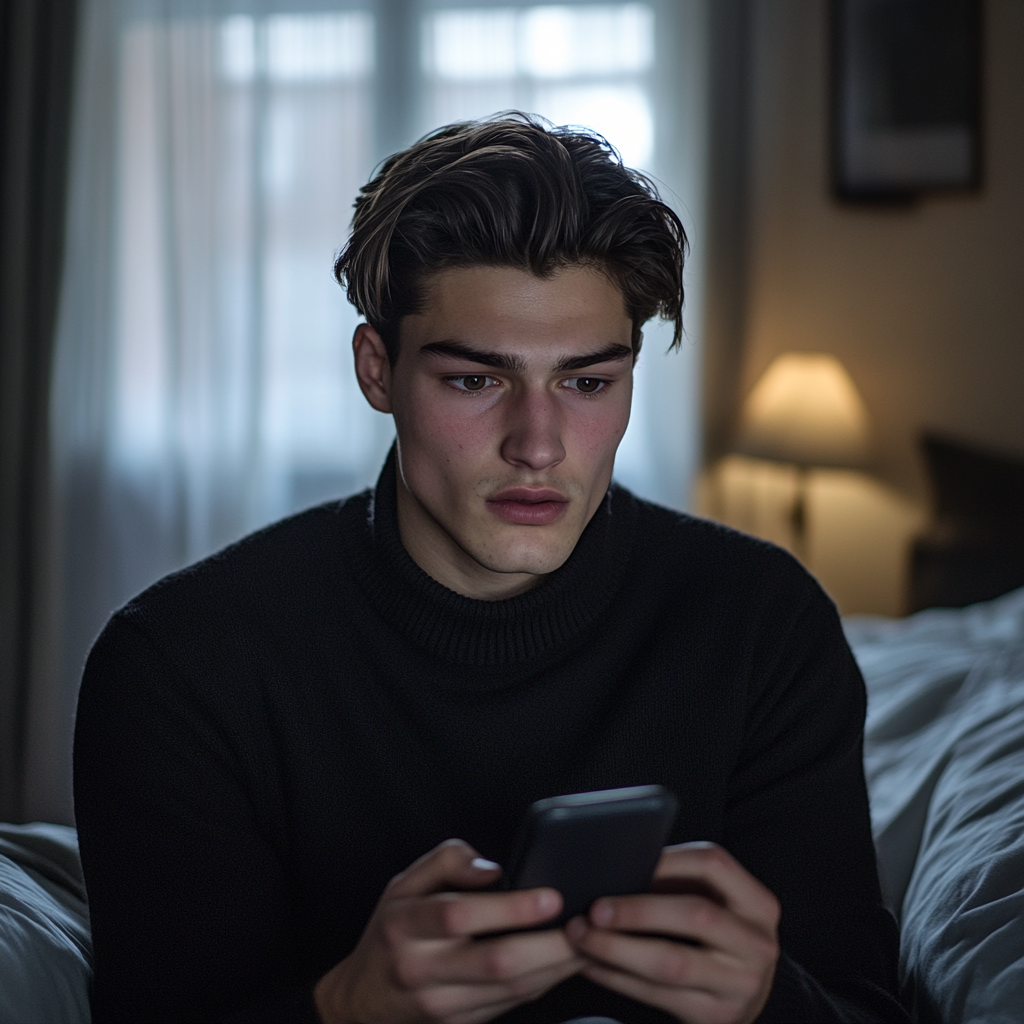Dating, these days, can be like navigating a minefield.
You just never know when it’s gonna blow up.
I’d never been the type to download dating apps, but after a bit too much wine and a heavy dose of encouragement from my best friend Mia, there I was, scrolling through profiles of grinning men holding up fish and selfies taken in bathroom mirrors.
Honestly, I was about ready to delete the app when I stumbled upon “Alex.”
He seemed interesting.

His profile had no flashy photos or overused travel quotes; instead, there was an artsy, black-and-white portrait, a few candid shots of art installations, and a simple bio that read, “Just a guy trying to turn beauty into meaning.”
Cheesy? A little.
But it was the kind of cheesy I liked.
I fell for the mystery and messaged him.
Soon, the texts became longer and more personal.
We swapped art pieces we loved, talked late into the night about dreams and goals, and shared our insecurities.
He made me feel like I wasn’t just another face in the crowd.
But I didn’t realize that he had an ulterior motive.
One that was designed to humiliate me specifically.
His communications were carefully orchestrated according to his plan.
But, there was one thing about me that he didn’t know.
And, it ended up making his plan backfire in the most awesome way.
The Portrait of a Lie
His first message was casual enough. “You seem like you’d have great taste in art,” he’d written, with a winking emoji that, despite myself, I found kind of charming.
For days, we messaged back and forth, with “Alex” revealing small details about himself.
He’d just moved here, he told me, trying to break into the art world and struggling like most artists do.
I pictured a sensitive, passionate guy with paint-splattered hands, living in some drafty loft, working on canvases late into the night.
I was ready to dive into his story.
But even from the start, there were tiny clues—little, irritating inconsistencies.
Once, he sent me a photo of a painting he said was his, but I was pretty sure I’d seen it on the Instagram of a well-known street artist in New York.
He waved it off, saying he’d used it “for inspiration.”
Another time, he confused Jackson Pollock with Jean-Michel Basquiat in a conversation about favorite artists.
I was puzzled but let it slide, figuring everyone makes mistakes.
I ignored the red flags because he made me feel seen.
After a couple of weeks, our messages had evolved into long conversations, everything from life’s big questions to tiny personal confessions.
He seemed to understand the challenges of being a creator, and that connection felt rare.
When he started talking about his financial struggles, how he was rationing art supplies to keep creating, it hit a soft spot.
I didn’t think twice about it when he casually mentioned he was behind on rent and low on supplies.
So when he asked if I could send him a little something “just to tide him over,” I ignored my instincts and obliged, thinking, Who else would understand the artist’s life if not another artist?
But that one favor soon turned into a couple more.
The casual, thoughtful artist was slowly slipping away, revealing someone… less complex, someone more focused on what I could do for him.
But before I could wrap my head around it, I was all in. By then, I’d invested time, emotion, and even a little bit of money.
Then one night, after another “emergency” request for funds, I did what I should have done weeks earlier: I started looking deeper.
Finding the Real Truth
It started with a reverse image search on one of “Alex’s” profile pictures, the kind of thing I should have done the second he mentioned he was “struggling for rent” but could still afford a smartphone.
My hands were shaking as I clicked through the results, and there he was: a low-grade “influencer” named Connor, known around town for his fitness selfies and, apparently, a knack for running small-time scams.

His account was a carefully curated collection of “authentic moments”—beach trips, gym shots, even the occasional inspirational quote, always positioned just right for maximum engagement.
I clicked through his photos, anger building with each one.
This wasn’t some misunderstood artist desperate for connection. Connor was a collector of followers, of likes, and comments.
He wasn’t interested in art or depth or connection—he was in it for clout.
And he wasn’t just doing this to me; I found comments from other women tagging him, calling him “amazing” and “inspiring.”
I was furious, but more than that, I was embarrassed. I’d allowed myself to be duped, and that wasn’t something I took lightly.
After a sleepless night, alternating between shame and anger, I made a decision.
Blocking him was too easy, too satisfying for him.
I wanted him to feel the same raw humiliation he’d put me through, but I wanted it in public, where he thrived and schemed.
So I spent the next day creating a new persona, crafting a profile as “Marianne Rhodes,” an influential gallery owner on the hunt for new, bold talent.
I set up her profile, tailored with high-end clothing, polished artwork, and a bio that read, “Creating spaces for artists to find their voice.”
It wasn’t long before Connor, predictably, found me.

I made sure Marianne was polite, almost aloof, careful not to show too much interest at first.
Connor, of course, took the bait. Soon, he was liking Marianne’s photos, posting comments on her “gallery events,” even sending direct messages.
In one message, he went on about how he was “struggling” to find a real art platform to recognize his “unique vision,” clearly angling for the kind of fake sympathy he’d used on me.
This time, I wasn’t fooled. I was focused. I had one goal: draw him in, make him commit.
I told him I’d reviewed his work and thought he had “real potential”—but that our gallery was competitive, and only artists willing to self-promote would be considered.
I could almost feel his excitement through the screen. “Of course, anything you need!” he replied instantly.
So I sent him a message, asking for a sample piece and some “publicity posts” to show his dedication.
As I watched him post photo after photo promoting his nonexistent “gallery debut,” I felt a deep, satisfying sense of justice.
This time, he was the one being strung along.
The trap was set.
The Bait Is Cast
The plan was running almost too smoothly.
Under the guise of “Marianne Rhodes,” I was sending Connor hints and updates about his “upcoming debut,” an exclusive gallery showcase I made up out of thin air.
I created a little graphic with a minimalist black-and-white logo for “Studio 21”—a fictitious high-end gallery—and sent it to him, letting him know he’d made the first cut.
His response came within minutes: a series of grateful, enthusiastic messages and an over-the-top thank-you post on his social media, tagging the fake gallery.
He’d even captioned it with: “Finally getting the recognition I deserve. This one’s for all the doubters!”
But it wasn’t just a post.
Over the next week, Connor went all out. He recorded videos talking about his “journey,” his “passion for art,” and the “incredible honor” of being chosen for this prestigious opportunity.
It was both satisfying and nauseating to watch him ramble on about his dedication to an art form he clearly knew nothing about.
To anyone watching, he was a struggling artist on the brink of discovery. But to me, he was just digging himself deeper.
As the “showcase” approached, I let him know that his final requirement was to create an original piece and deliver it to the gallery “for review.”
Of course, Connor didn’t have a clue where Studio 21 was, so I suggested he drop it off at a popular local café under Marianne’s name, and “our team” would retrieve it.
By now, Connor was too committed to back out.
He was determined to see this through, so he created a slapdash piece that he undoubtedly thought was impressive—a mix of acrylic and spray paint he probably whipped up in an afternoon.
The morning of his “gallery debut,” I received an overjoyed message from him saying he’d delivered the painting, along with a final post announcing his “big night.”
By then, he was buzzing with excitement, practically tasting the fame and validation he thought awaited him.
Little did he know that the real audience wouldn’t be at any gallery event but watching from his own followers’ screens.
Caught in His Own Reflection
That evening, I was ready.
I’d spent the last few days compiling everything—screenshots of our conversations, his manipulative messages, photos of the cheap “artwork” he’d proudly declared was his best piece yet, and a clip of him hyping the fake gallery event.
I posted everything as a thread on my own profile, tagging his main account so that anyone who followed him would see it.
My first post read: “A story about truth, deception, and justice in the art world. #CaughtInTheNet #ArtFraud.”
The response was immediate. Within minutes, his followers, many of whom had been cheering for his “gallery debut,” began flooding my post with comments.
Shocked messages, laughing emojis, calls for him to respond. I could see his follower count start dropping in real-time as the story spread, his carefully constructed influencer image beginning to unravel.
Then, for the final touch, I went live on my account with a video breakdown of everything he’d done, the full story of how he’d catfished me and used others in his pursuit of fame.
It didn’t take long for the news to spread.
Connor’s name quickly became synonymous with fraud, and every post he’d made hyping up his gallery debut was suddenly filled with mockery and angry comments from people who felt just as cheated as I had.

In a last, desperate attempt to salvage his reputation, Connor went live, trying to frame himself as a misunderstood artist who’d been “manipulated” by me.
But his own followers weren’t buying it.
The comments were brutal, calling him out for his lies, his empty words, his self-promotion, and finally, his exploitation of people who genuinely cared for him.
In the days that followed, I received messages of support from strangers and friends alike, people who thanked me for standing up and exposing a catfish.
It was a small victory, but an important one, a reminder that art isn’t just about creating beauty—it’s about finding the truth.
